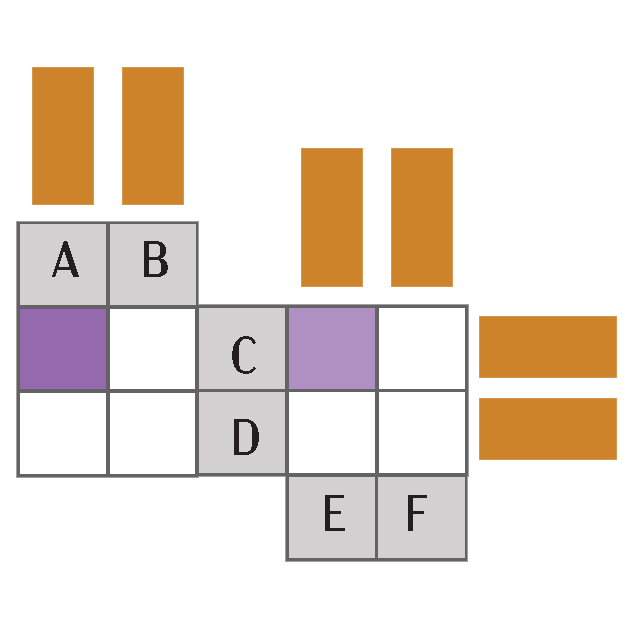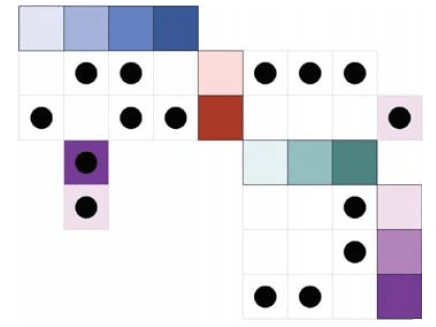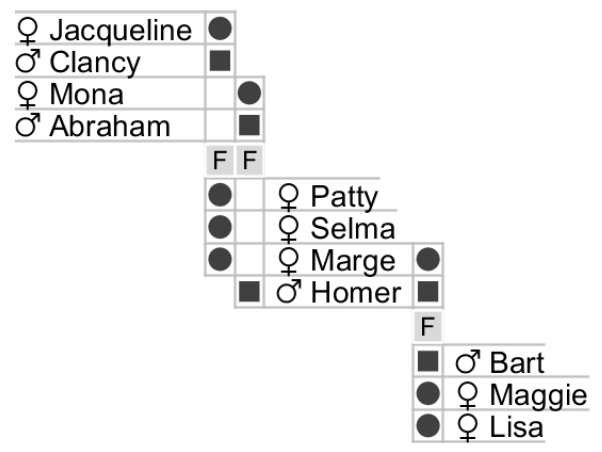A quilt is a tabular layout optimized for layered networks. Quilts are similar to an adjacency matrix in that nodes are represented as either rows or columns, and edges are shown in the cells at the intersection of the source and target nodes.
Optimized for networks with several node or edge attributes. Also ideal for tasks on single nodes and neighbors.
Supports tasks on paths, clusters, and sub-networks.
Not ideal for networks with more than 100 nodes, or dense networks.


